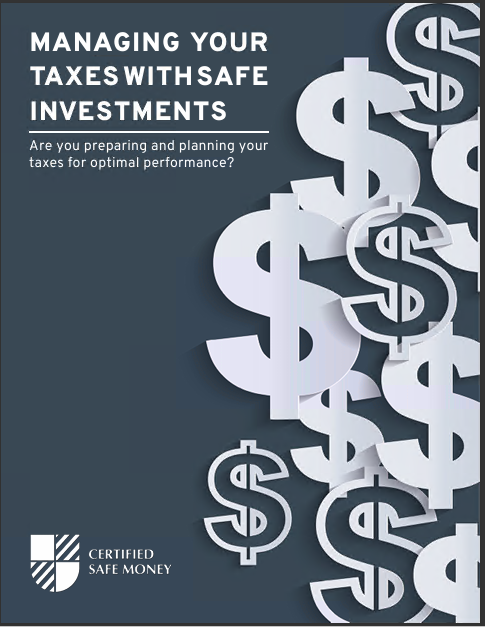Key Takeaways
-
Small mistakes with annuities, such as ignoring contract terms or tax rules, can have long-term effects on your retirement income security.
-
Careful planning, regular reviews, and professional guidance help you avoid these pitfalls and preserve the value of your annuity.
Why Paying Attention to Annuities Matters Now
As you focus on building a secure retirement in 2025, annuities remain one of the most talked-about safe money investment options. Their ability to offer guaranteed income, tax-deferred growth, and financial stability makes them attractive. However, while annuities can support long-term security, there are common mistakes that can easily reduce their benefits. If you are not careful, these mistakes may completely undermine the retirement income you worked hard to build.
Overlooking the Impact of Fees
One of the most overlooked factors in annuities is the cost of ownership. While you may be focused on the guaranteed income stream, you must also pay close attention to fees. Common charges include:
-
Administrative fees
-
Mortality and expense charges
-
Investment management fees for variable annuities
-
Rider costs for added benefits
Even a fee of 1% to 2% each year may look small, but over a period of 20 to 30 years, it can take thousands of dollars away from your retirement income. Reviewing these charges before purchase and monitoring them annually helps keep your annuity aligned with your goals.
Not Understanding Surrender Periods
Annuities come with specific timelines called surrender periods, often lasting anywhere between 5 and 10 years. If you withdraw funds before this period ends, you may face steep penalties. For example:
-
Early withdrawals within the first 3 to 5 years may result in charges as high as 7% to 10% of the amount withdrawn.
-
The penalty percentage gradually decreases over time until it fully disappears.
Failing to plan for liquidity needs during this period can leave you with unexpected costs. This is why it is important to ensure you have other sources of accessible funds to cover emergencies before locking money into an annuity.
Ignoring the Tax Consequences
Annuities offer tax deferral, but that does not mean tax freedom. When you take distributions, the earnings are generally taxed as ordinary income. Common tax pitfalls include:
-
Believing annuity withdrawals receive the same treatment as long-term capital gains (they do not).
-
Forgetting that withdrawals before age 59½ usually face a 10% penalty on top of income tax.
-
Not planning for Required Minimum Distributions (RMDs) if your annuity is held inside an IRA or other qualified account.
In 2025, the IRS requires RMDs to begin at age 73 for most retirees. Not taking them on time could result in penalties as high as 25% of the missed amount.
Choosing the Wrong Payout Option
At the time of annuitization, you will need to select how you want to receive your payments. The wrong choice can lock you into an option that may not align with your financial needs. Common payout choices include:
-
Life-only income: Offers higher monthly payments but ends at your death.
-
Joint-life income: Covers both you and your spouse, usually with lower monthly payments.
-
Period-certain: Guarantees payments for a set number of years, regardless of whether you live through the entire term.
Not considering your spouse’s or dependents’ financial needs can create gaps in retirement income planning. Reviewing all payout structures before making your decision ensures your annuity supports your full retirement picture.
Misjudging the Role of Inflation
A fixed annuity provides predictable income, but in 20 or 30 years, inflation may erode its purchasing power. Even at a modest 3% annual inflation rate, the value of $2,000 per month could shrink to the equivalent of about $1,000 in just 24 years. Without proper planning, this can significantly weaken your income security.
To address this, some retirees choose annuities with cost-of-living adjustments (COLA) or use annuities as just one part of a broader strategy, balancing them with investments that offer growth potential.
Forgetting About Beneficiary Designations
A surprisingly common mistake is failing to update or properly assign beneficiaries on annuity contracts. Without a clear designation:
-
Assets may go through probate, delaying access for your heirs.
-
Outdated beneficiaries may result in assets going to the wrong person.
It is best to review beneficiary designations every few years or after major life changes, such as marriage, divorce, or the birth of a child.
Not Reviewing Riders Carefully
Annuity riders add features such as guaranteed income or enhanced death benefits, but they come at an extra cost. A mistake many people make is adding riders they may never use. Over a retirement timeline of 20 to 30 years, these extra costs can accumulate significantly.
You should only consider riders that match your actual needs, such as long-term care protection or lifetime income benefits. Otherwise, the additional expenses may drain your account unnecessarily.
Assuming One Annuity Fits All
Not all annuities are created equal. Fixed, variable, indexed, and immediate annuities each serve different purposes. A mismatch between your goals and the annuity type can undermine retirement security. For example:
-
Fixed annuities may not keep up with inflation.
-
Variable annuities may expose you to market risk you were trying to avoid.
-
Immediate annuities may reduce liquidity options compared to deferred contracts.
Carefully matching the annuity type with your long-term financial plan prevents misalignment and keeps your retirement strategy on track.
Not Reassessing Over Time
Retirement planning is not a one-time event. Circumstances change, tax laws shift, and healthcare costs rise. An annuity that seemed like a good fit in 2020 may not serve your best interests in 2025 or beyond if it has not been reviewed.
Experts recommend reviewing your annuity every 1 to 2 years to ensure it continues to align with your retirement goals, cost expectations, and overall investment portfolio.
When You Rely Too Heavily on Annuities
While annuities provide guaranteed income, depending solely on them can create risks. Without other investments, you may:
-
Lose out on market growth opportunities.
-
Face limitations on liquidity.
-
Experience reduced flexibility in covering unexpected costs.
A balanced retirement plan includes annuities, Social Security, pensions, and personal investments working together.
Building a Retirement Income That Lasts
Avoiding the pitfalls of annuities comes down to informed decision-making and continuous review. By paying attention to fees, tax rules, payout options, and inflation, you protect your retirement income from unnecessary losses. Remember, annuities can be a strong foundation for your retirement, but they are not one-size-fits-all solutions.
If you want to make sure your annuity supports long-term financial stability, now is the time to review your options and discuss them with a licensed professional listed on this website.












